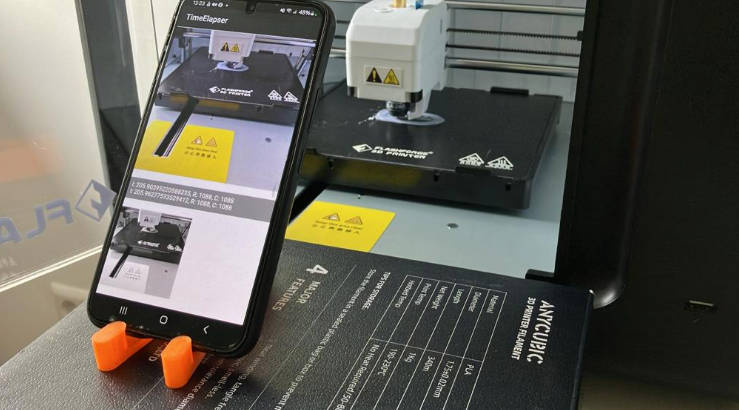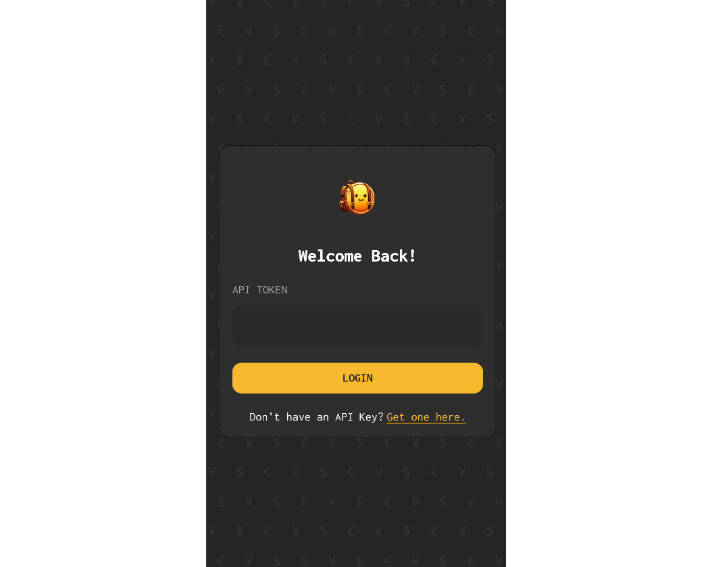Time Lapse for Flashforge Adventurer 3 3D Printer with an Android Smartphone

How and Why This Project Started
During my recent vacation, I wanted to explore how well OpenAI ChatGPT could assist in software implementation. Despite having many years of experience in embedded software development (especially in C), I had no knowledge of Android Studio, Kotlin, Gradle, and Android development. Additionally, I was unfamiliar with how G-code works for 3D printers. I decided to take on the challenge and see if I could create a functional application with the assistance of ChatGPT. Surprisingly, it worked!
Applications and Scripts
-
Main Application for Android Smartphone
- Implemented in Android Studio with Kotlin
- Integrated FFmpeg for video generation and OpenCV for image processing
-
Python Script to Patch G-code of 3D Printer
How to Use
- The application monitors the camera preview and detects when the printer bed reaches the front of the printer.
- This is achieved through a simple threshold of the average intensity of the bottom part of the image. When the black printer bed arrives at the front, the intensity decreases to a level below a set threshold.
- The Python script patches the G-code to bring the printer bed to the front after each layer is printed. The camera head is positioned on the back and right of the printer.
- To generate the video, press the “volume down” button on the smartphone and wait.
- Captured pictures are stored in separate directories under the DCIM directory on the smartphone, allowing video compilation outside the smartphone for additional processing possibilities.
First Results
See the first video: YouTube Link
Description of Main Module CameraActivity.kt
The CameraActivity class is the main activity of the TimeLapser Android application, responsible for camera preview, picture capturing, video compilation, and bed arrival detection. Below is a breakdown of its structure and functionality.
Dependencies and Imports
The activity imports necessary Android and third-party libraries, including OpenCV and FFmpeg.
Properties
timeStampvid: String – Timestamp used for naming video files.camera: Camera – Represents the device camera.surfaceView: SurfaceView – Provides a dedicated drawing surface for the camera preview.surfaceHolder: SurfaceHolder – Manages the surface ofsurfaceView.grayImageView: ImageView – Displays grayscale images.rgba: Mat – OpenCV matrix for RGBA color space.gray: Mat – OpenCV matrix for grayscale images.logTextView: TextView – Displays log messages.ffmpeg: FFmpeg – Manages FFmpeg functionality.cameraPermissionCode: Int – Permission code for camera access.pictureNumber: Int – Tracks the number of captured pictures.lastTriggerTime: Long – Records the timestamp of the last trigger event.triggerAvailable: Boolean – Flag indicating if a trigger event is available.debounceTime1: Long – Configurable debounce time for trigger events.debounceTime2: Long – Configurable debounce time for preventing rapid triggers.videoProcOngoing: Boolean – Flag indicating if video compilation is in progress.
onCreate Method
- Initializes OpenCV.
- Sets up UI elements and permissions.
- Initializes timestamp and starts camera preview.
onKeyDown Method
- Handles volume key events for picture capturing and video compilation.
compileVideo Method
- Compiles images into a video using FFmpeg.
- Uses coroutine for asynchronous execution.
createOutputVideoPath Method
- Generates the output path for the compiled video.
capturePicture Method
- Captures a picture using the camera.
- Calls
savePictureand restarts the camera preview.
savePictureAsync Method
- Saves the captured picture asynchronously.
savePicture Method
- Calls
savePictureAsyncon the main thread.
getOutputMediaFile Method
- Creates and returns the output file for saved pictures.
startCameraPreview Method
- Initializes and starts the camera preview.
- Configures camera parameters, preview size, and focus modes.
- Sets touch focus listener on the
SurfaceView. - Sets the preview callback for frame processing.
setCameraDisplayOrientation Method
- Sets the display orientation of the camera based on device rotation.
stopCameraPreview Method
- Stops and releases the camera preview.
setCameraZoom Method
- Sets the camera’s focus mode and zoom level.
handleTouchFocus Method
- Handles touch events for setting the focus area.
- Uses camera parameters to set focus areas and metering areas.
- Calls auto focus to apply changes.
calculateFocusRect Method
- Converts touch coordinates to camera coordinates.
- Calculates a focus area rectangle.
configureCameraPreviewSize Method
- Configures the camera preview size based on desired dimensions.
findBestPreviewSize Method
- Finds the closest supported preview size to the desired size.
surfaceCreated Method
- Initializes OpenCV matrices



